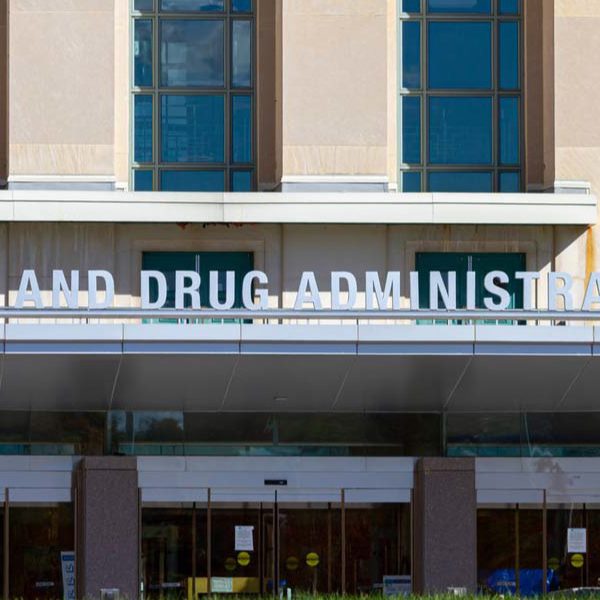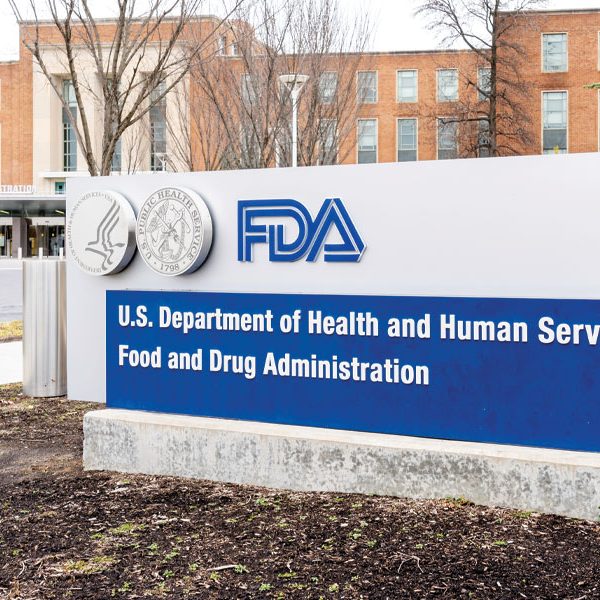What is the Rare Disease Endpoint Advancement Pilot Program and What Does it Mean for Rare Disease Research

In the PDUFA VII Commitment Letter, FDA announced its intention to roll out the Rare Disease Endpoint Advancement (RDEA) Pilot Program next year. This program is intended to address some of the unique challenges rare disease researchers face when determining endpoints to assess the efficacy of drug products in clinical trials.
Challenges of Rare Disease Programs
Rare disease programs require intensive collaboration with the FDA due to a lack of validated clinical trial endpoints. Discussions with the FDA around complex topics such as mechanisms of action, pathogenesis, diagnostics, animal models, natural history, etc., are critical to understanding the disease and selecting clinically-relevant endpoints.
Rare disease researchers must work creatively as there is a limited patient population to contribute to advancing various therapeutic options through enrollment in clinical research.
Many rare disease programs also struggle with funding and additional roadblocks to reaching viable therapy.
Applying the Type A/B/C meeting format to intensive scientific discussions and the inevitably incremental resolution of key development questions in an environment of scarce resources requires creative solutions.
FDA Hopes to Advance Rare Disease Drug Development
By supporting the development of robust efficacy endpoints, especially those that may be applicable across multiple related rare diseases or those with similar manifestations, FDA hopes to drive the general advancement of rare disease drug development.
To this end, the RDEA pilot is intended to aid researchers as they work through the known challenges to understand and characterize the key signs and symptoms of a particular rare disease. Whether these be direct measurements of how patients with rare diseases feel, function, or survive or surrogate endpoints.
The goal of this pilot is to provide the opportunity for repeated, intensive interactions with the FDA by offering additional engagement opportunities to rare disease researchers that meet specific criteria.
Under PDUFA VII, FDA has committed to developing its capacity to execute the complex and intensive reviews necessary for novel endpoint development.
Key Advantage of the RDEA Pilot
The key advantage of the RDEA pilot is it allows applicants to participate in up to four focused meetings with relevant FDA staff to discuss endpoint development.
The additional input gained at these meetings may be strategically used to ensure that development programs are in full alignment with FDA expectations, but also to avail inexperienced applicants to the wealth of knowledge at the FDA providing the opportunity to speak with experienced drug developers who now work for the FDA.
It is important to understand that while helpful, FDA advice provided in the RDEA pilot is considered non-binding and does not guarantee approval for subsequent applications that utilize the efficacy endpoints discussed during RDEA meetings.
After the four meetings have been conducted, or when the applicant does not have additional endpoint-focused discussions, the development will continue through the respective pathways. Additional input can be requested using the existing mechanisms for formal meetings with the FDA.
Criteria: Status of the Program
To be considered for the pilot, rare disease programs should have an active Investigational New Drug (IND) Application, pre-IND, or a natural history study utilizing a proposed endpoint for discussion with the FDA.
Applicants developing innovative or novel endpoints for common diseases may also apply if they can provide sufficient justification that the endpoint could apply to a rare disease.
Criteria: The Endpoint(s)
The proposed endpoint must be novel—meaning that either it has not been used to support drug approval or is a substantial modification of another endpoint (one that has been used previously to support drug approval). It also should be intended to establish substantial evidence of effectiveness in a rare disease drug program.
FDA also clarified that it would preferentially consider programs intended to have multiple uses, either through relevance to other diseases or those that may lead to the development of a range of different types of endpoints.
FDA will also consider surrogate endpoint proposals, especially those that include a new approach to clinical data collection in the pre-market stage to allow for the validation of these endpoints.
Applicants intending to submit a surrogate endpoint proposal should consider requesting a Type C Surrogate Endpoint meeting first.
Proposal Content
Adequate proposals should address each of the criteria described above and provide the following:
- A scientific rationale for the reason an endpoint is being explored and a scientific justification that the endpoint measures meaningful clinical benefit in the rare disease(s) or condition(s)
- Relevant summaries of pertinent information related to the endpoint from prior studies
- A statement indicating whether the company is willing to allow public disclosure of information from its development program
The Pilot
FDA is committing to selecting very few proposals, only one in 2023 and one per quarter (maximum: three per year) for the rest of the fiscal years under PDUFA VII—although FDA has stated that, depending on staffing, they may expand beyond this number of selected proposals.
Researchers may, however, benefit from this program even if not directly selected for participation.
Firstly, FDA is committing to conducting up to three public workshops by the end of the fiscal year 2027 to discuss various topics relevant to endpoint development for rare diseases, such as multidomain analysis methods.
Secondly, FDA may issue additional supportive materials and present the novel endpoints developed through RDEA in public forums (e.g., guidance document(s), website(s), or public workshops).
Timelines for Submissions and Meetings
FDA commits to confirming receipt of the initial proposal within 14 days and will notify the applicant of the selection decision no later than 60 days following the end of the fiscal year quarter during which it was submitted.
For this reason, it is in the applicant’s best interest to submit early enough in the quarter to ensure adequate time for the proposal to be reviewed before the end of the quarter.
For those selected, meetings will typically be scheduled within 45 days following the FDA’s receipt of the meeting request and complete briefing document.
If the topics and questions are focused, the timeline could potentially be expedited at FDA’s discretion. There is no set requirement for the time between meetings; rather, it will depend on when new issues or questions arise and how quickly an adequate request and briefing materials can be submitted.
Increased Transparency
As mentioned above, FDA intends to share information gained from these programs publicly to promote innovation and the evolving science of efficacy endpoint development and use.
The FDA and the applicant will have to agree on the information that the FDA may share publicly before the initial RDEA meeting. If no such agreement can be reached, the proposal will no longer be part of the RDEA pilot program.
What Does RDEA Mean for the Rare Disease Community?
We reached out to members of the rare disease-focused drug developers and patient advocacy communities to ask what this new initiative meant to them and their attempts to find treatments and cures for their patient groups.
This is what they said:
For A-T Children’s Project, the RDEA program could dramatically improve drug development for A-T and other rare diseases.
Ataxia-telangiectasia (A-T) is a rare disease that causes muscle control and balance loss, cancer, lung disease, and immune system problems in children and young adults, shortening their lives. The non-profit A-T Children’s Project partners with academic and industry investigators to develop potential treatments. Brad Margus, the founder of the non-profit and father of two sons battling A-T, believes that the FDA’s pilot program could dramatically improve drug development for A-T and other rare diseases.
“The ability to get direct input from the FDA early on, while endpoints for clinical studies are being selected, will be a game-changer, making our trials more precise and relevant to everyday life while avoiding discouraging missteps. It can be brutally disappointing to families of A-T kids when a trial fails because it technically missed an endpoint that they felt didn’t accurately reflect efficacy in their children or when we didn’t fully understand the FDA’s views of the endpoint until after the fact. The opportunity to work closely with the FDA on what’s meaningful to patients – before a trial begins – will be wonderful.”
-Brad Margus, founder of the non-profit A-T Children’s Project
For the patient advocacy group Chelsea’s Hope, the RDEA program could benefit them when partnering with potential drug development partners to open new pathways for treatments for rare diseases like Lafora disease.
“Our community has been working tirelessly to move promising treatments out of the lab and into human trials for our children. In fact, multiple therapy modalities have been developed and shown effective in animal models. However, a significant roadblock exists because getting approval for meaningful clinical endpoints can be an arduous process. We are very excited about the FDA Rare Disease Endpoint Advancement Pilot Program, which directly addresses this need and supports communities in the most critical part of the regulatory submission process. The program has the potential to open new pathways for treatments for rare diseases like Lafora disease.”
-Kit Donohue, Scientific Director, Chelsea’s Hope, Lafora Children Research Fund
For Parasail LLC, a clinical-stage rare disease company, the RDEA program could uniquely benefit from assessing the therapeutic efficacy of their VAL-1221 antibody-enzyme fusion in Lafora Disease.
”Lafora is a devastating genetic childhood epilepsy with no current treatment. Glycogen accumulation in the brain drives the hallmark symptoms of this disease, including increasing seizure frequency, progressive dementia, and loss of functional mobility. While extremely severe and progressive individually, these symptoms collectively advance at different rates; therefore, FDA programs such as RDEA would be especially beneficial in identifying therapeutic endpoints for a pivotal trial.”
-Vicki Wong, MPH, Co-Founder & Vice President, Parasail LLC
By: Dr. Amanda Beaster, Associate Director of Regulatory Strategy, Ben Kaspar, Director of Regulatory Affairs, and Dr. Christine Clarke, Senior Global Regulatory Affairs Manager
If you have questions about the RDEA Pilot or any other PDUFA VII Updates, email info@mmsholdings.com to speak to a regulatory expert.
Learn more about MMS Regulatory Affairs and Operations.











